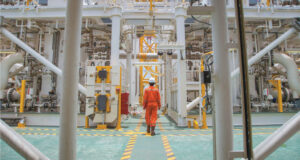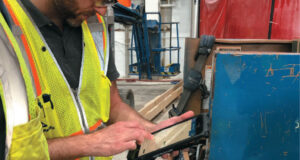MARK MONTONARA
Accidents happen. No matter how many safety procedures you have in place or safety mechanisms a facility has installed, human error can cause an incident. But leaders can foster a culture of safety that will reduce the potential for human error and stop critical performance incidents from occurring. What it takes is careful planning to identify potential risks and to put Human Performance measures and training into place.
WHAT IS HUMAN PERFORMANCE?
Human Performance is an operating philosophy that recognizes that people make mistakes. It focuses on identifying the causes of human errors and creating specific tools or procedures to eliminate them. At its most basic, Human Performance empowers employees to contribute to the safety and operational excellence of an organization. The Principles of Human Performance are:
1. Even the best employees can make mistakes.
2. Individual behavior is influenced by organizational processes and values.
3. Situations where errors or mistakes are likely are predictable and manageable.
4. Operational and personal incidents can be avoided by understanding mistakes and using them as learning/re-training opportunities.
5. Leadership’s response to failure matters.
These five principles help to focus the workforce on taking deliberate actions to reduce mistakes through Active Error Elimination. They form the basis for designing the organizational structure for managing the business, making products, and operating safely. A risk analysis can help identify the predictable events that are most likely to lead to mistakes.
Dr. James Reason, a psychologist and expert in human error and organizational processes, said it best: “Workplaces and organizations are easier to manage than the minds of individual workers. You cannot change the human condition, but you can change the conditions under which people work.”
Some of the organizational processes that he advocates include the creation of redundant layers of protection, diverse varieties of protection, and autonomous layers of protection. An example of these multiple layers would include equipment design, written Standard Operating Procedures, employee training, and safety equipment. Each of these by itself increases safety; when combined, they reduce the potential for mistakes that create safety issues.
LEADERSHIP’S RESPONSE MATTERS
People never “make mistakes” on purpose. A mistake is a non-deliberate action that creates an unwanted effect. When mistakes do occur, use them as the catalyst for improving processes and training personnel.
When investigating an incident, it’s important to identify whether all normal procedures were followed, and if so, to identify where the error occurred and determine how it can be prevented in the future. (See sidebar for eight critical questions management should ask.)
Successful organizations take the time to use incidents as learning opportunities, not as events that require punitive action. The most effective “human performance” organizations also take advantage of “near misses” as learning opportunities. Establish a culture where the following activities are the norm:
• Employees feel free to stop a task when uncertain to clarify procedures and ask questions. What is the policy? Is there anything unsafe about this task? Do I understand the directions? Is this what we usually do?
• Peer checking. This is when an employee engages with an equally qualified person as a second verifier of the activity to be performed to reduce the probability of error.
• Self-checking. Use the STAR system: Stop and focus your attention; Think about the task, the desired outcomes, critical steps, possible errors; Act (do the job); Review and verify that what you wanted to occur happened—if not, why not?
• Formal procedures – Develop SOPs and train employees to follow them.
• When training on a new task, set up pre-job briefings and post-job reviews.
By establishing a culture of safety with a focus on the principles of Human Performance, plants can create an environment where errors are minimized, safety is the norm, and employees work together to improve processes and procedures. Employees will be empowered to make improvements and to communicate potential problems before they occur.
This article is provided through TAPPISAFE, a standardized safety orientation and verification program supporting more than 70 facilities worldwide. Learn more at tappisafe.org.
Mark Montonara is a marketing lead with TAPPI; reach him at [email protected].
Eight Questions Management Should Ask After an Incident
1. Are the people OK?
2. Is the facility safe and stable?
3. What happened?
4. What could have happened?
5. What factors led up to this event?
6. What worked well? What failed?
7. Where else could this problem happen?
8. What else should I know?
 Paper 360
Paper 360

